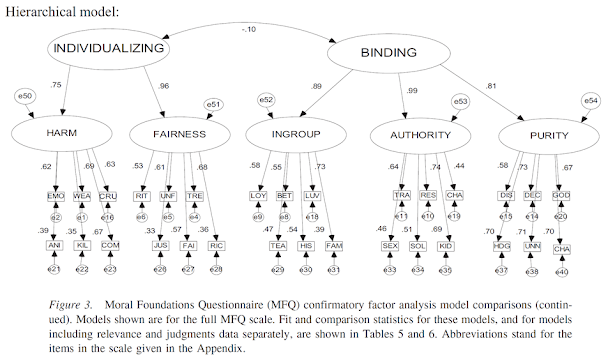Moral Foundations Theory and Child Custody

I've been studying Moral Foundations Theory and reading this morning from Graham, J., Nosek, B. A., Haidt, J., Iyer, R., Koleva, S., & Ditto, P. H. (2011). Mapping the moral domain. Journal of personality and social psychology , 101 (2), 366. If you click the link you can hear some of my reading and studies. Moral Foundations Theory begins with the idea that " Moral systems are interlocking sets of values, virtues, norms, practices, identities, institutions, technologies, evolved psychological mechanisms that work together to suppress or regulate selfishness and make social life possible.” (p. 368) While traditionally, Kohlberg and Gilligan tended to tap into Justice and Care as the foundation of research into morality. This led to what Haidt and his line of researchers would call "truncated" views of morality emphasizing rational codes of conduct that reduce harm to others. Kohlberg himself posited three levels of moral development each having two stages.